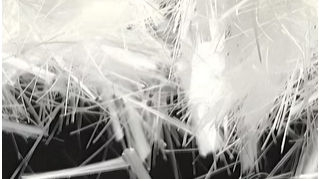Airport Taxiway Reinforcement Using Macro PP Fibers
- pioneerfiber

- Jul 16
- 2 min read
Updated: Sep 22
Information Tags
• Type: 4-minute read
• Audience: Construction professionals, engineers, architects, contractors
Introduction
Airport taxiways endure repeated heavy wheel loads, temperature fluctuations, and moisture exposure—making durability and crack resistance essential for long-term performance. Traditional steel mesh reinforcement is often labor-intensive, corrosion-prone, and time-consuming to install. In contrast, macro polypropylene (PP) fibers offer a corrosion-free, easy-to-integrate solution for strengthening concrete in high-traffic aviation infrastructure. This article explores how macro PP fibers are being utilized in taxiway construction to deliver long-lasting, cost-efficient performance without compromising safety.
Challenges in Taxiway Pavement Design
Airport taxiways are subject to static and dynamic loads from aircraft weighing hundreds of tons. These surfaces must resist fatigue, shrinkage cracks, and environmental stress. Traditional reinforcement methods, such as steel mesh or rebar, can corrode over time and require precise placement. Macro PP fibers, added directly into the concrete mix, distribute reinforcement throughout the slab, improving tensile strength and reducing the potential for cracking and spalling.

Contact us for samples, consultations, and tailored solutions. [Contact us]
Performance Advantages Over Steel Reinforcement
Macro PP fibers provide several advantages compared to steel:
• No corrosion: Ideal for airside environments exposed to deicing salts or moisture
Labor savings: No need for steel placement or tying
• Uniform reinforcement: Fibers are dispersed throughout the mix, enhancing structural integrity
• Improved post-crack behavior: Fibers maintain load transfer even after minor cracking

Find the perfect solution for your concrete project. [Explore solutions]
Proven Field Applications and Case Studies
International airports in Europe, the Middle East, and Asia have adopted macro PP fiber-reinforced concrete (FRC) for taxiway upgrades. For example, a European airbase replaced steel mesh with 4 kg/m³ of macro PP fiber, reducing construction time by 30% while improving performance under repeated aircraft wheel loads. These projects demonstrate how fiber-reinforced concrete (FRC) can meet stringent aviation performance standards.
Compatibility with Pavement Design Standards
Macro PP fibers comply with global concrete standards such as ASTM C1609 and EN 14651 for flexural performance. They are suitable for both jointed plain concrete pavements (JPCP) and continuously reinforced concrete pavements (CRCP). Their use has been validated in Finite Element Analysis (FEA) models for airfield loading scenarios, supporting design optimization in taxiway slabs.
Sustainability and Lifecycle Cost Benefits
By eliminating corrosion concerns and reducing material waste, PP fibers contribute to greener construction practices. The reduction in labor, steel use, and maintenance frequency leads to long-term cost savings. With a growing focus on sustainable aviation infrastructure, macro PP fibers offer a future-ready reinforcement technology that meets both environmental and performance criteria.
Explore PIONEER’s range of concrete reinforcement fibers and how they improve concrete properties. Visit our website: www.pioneerfibre.com
Micro fiber >> Learn More
Macro fiber >> Learn More
Steel fiber >> Learn More
Asphalt fiber >> Learn More
Contact us today to request samples, technical data, or a custom solution for your project.
Email: Sales@pioneerfibre.com | Email: Support@pioneerfibre.com
WhatsApp: +1 (929) 569-9989 | +86 151-6240-5106





Comments